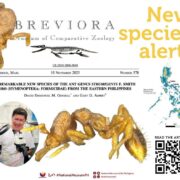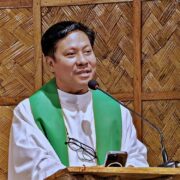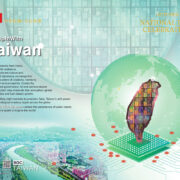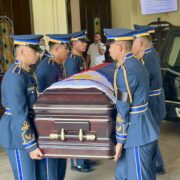Secret lives of books

Since March, I have been leafing through old books dating from the 16th to 19th centuries. Last Monday, I spent half a day documenting Philippine “Incunabula“—not the sexual demons known as “incubus” but, rather, the books printed in the Philippines from 1593 to 1643. The earliest Philippine books on record were “Doctrinas,” or books that gave the basics of Roman Catholicism. One Doctrina was in Chinese, the other in Tagalog. There is only one copy of the Tagalog Doctrina in the universe, preserved in the Library of Congress in Washington, which allows high-resolution download for free. This book is fascinating because it is the equivalent of the Rosetta Stone, which enabled scholars to decode the pre-Hispanic syllabary or “baybayin.” For example, the Lord’s prayer is given in Spanish in the Roman alphabet, followed by a Tagalog translation from the original Spanish in the Roman alphabet, then followed by the Tagalog version in baybayin. Reading the familiar prayers aloud, straight from the Doctrina, made me realize that if I were transported to late 16th-century Manila, my 21st-century Filipino would be understood.
At the National Library of the Philippines, I went through two books printed by Tomas Pinpin. I remember that my parents’ go-to Chinatown restaurant, Smart Panciteria, was on T. Pinpin in Binondo at the edge of Escolta. In Araling Panlipunan, I learned that he was the “Prince of Filipino Printers,” but my teachers forgot to give us the name of the “King of Printers.” Today, that would be either Canon, Epson, Brother, or HP. I was blown away by his “Librong pag-aaralan ng mga Tagalog ng wikang Kastila” (1610) that straddles both languages: Spanish and Tagalog. He also printed a “Vocabulario Japon” or Japanese Dictionary in Manila in 1630. From a handful of books, it is clear that missionaries from Spanish Manila who went off into Asia took along books in Chinese and Japanese, essential for evangelization. What other books printed in Manila and other parts of Luzon remain to be discovered in libraries abroad?
Although I have handled many rare books in my 40-year career, it was not until recently that I had given old books a second look. This time, I noticed the details of their structure: vellum covers, paper, binding, printing, typeface, font size, even the care that went into the ornamentation of capital letters.
Going through rare Filipiniana in the Royal Library of Belgium and the Library of the Bollandists, both in Brussels, ignited my dormant interest in early Philippine printing and helped me prepare for an opening keynote at the symposium on “Faith, Empire, & the Archive” organized by the San Agustin Museum, Princeton University, and the University of London School of Oriental and African Studies. Using 19th-century auction catalogs of the estate of Alexander Dalrymple, the researchers traced the books and manuscripts looted from San Agustin during the 1762 British occupation of the Philippines to libraries in London, Indiana, Tokyo, and Manila. These were scanned and made available online as a way of reconstructing the lost archive and library of San Agustin. Louella Revilla, the current San Agustin librarian, produced a table of books that remained after the looting, proving that contrary to popular belief, a lot of the “lost” library was still in Manila. How or why these remained can be inferred from physical inspection of the books. For example, some books have handwritten notes on the covers and flyleaf stating that these volumes had been removed from the library because these were listed in the “Index Librorum Prohibitarum” or the Catholic Index of Prohibited Books. These books remained because they were dispatched to someplace within the monastery complex, where they could not be read.
This time round, when I visited libraries, I looked beyond the books into different bookplates, signatures, inscriptions, erasures, and other markings that revealed the secret lives of some of the books, and the people who read or came in contact with them. Some of the names were familiar to me, just like long-lost friends. I stopped myself from shouting, “Uy! andito ka lang pala!”
Some names were known to me from history. Andres de Aguirre, for example, who left his signature on the title page of one book was one of the first five Augustinians, who first arrived with Legazpi in 1565. Four of them: Andres de Urdaneta, Martin de Rada, Andres de Aguirre, and Pedro de Gamboa are honored by street names in Makati. It is a pity that one name is missing: Diego de Herrera was replaced by V.A. Rufino. Herrera is being considered for canonization, and if successful, I wonder if Makati will revert to the old name, the name of a saint, rather than that of a Pinoy businessman. Surely, there are always new streets that can be named for just about anyone? On the issue of naming and renaming streets, shouldn’t old street names be retained because they have been “sanctified by usage”?
Books are not just for reading, they are indicators of taste, education, classification of learning, remnants of history that have other stories to tell if you ask the right questions.
——————
Comments are welcome at aocampo@ateneo.edu
Ambeth is a Public Historian whose research covers 19th century Philippines: its art, culture, and the people who figure in the birth of the nation. Professor and former Chair, Department of History, Ateneo de Manila University, he writes a widely-read editorial page column for the Philippine Daily Inquirer, and has published over 30 books—the most recent being: Martial Law: Looking Back 15 (Anvil, 2021) and Yaman: History and Heritage in Philippine Money (Bangko Sentral ng Pilipinas, 2021).


















A liberating general education program